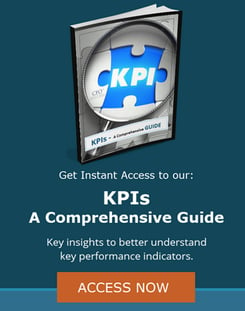 Nonprofit organizations are required to report functional expenses either in footnotes, the Statement of Activities (SOA), or a separate Statement of Functional Expenses (SOFE). The goal of this functional expense allocation is to illustrate the relationship between program expenses and supporting expenses to better understand how those supporting expenses further the organization’s mission. And while this sounds easy enough in concept, some expenses can be difficult to classify.
Nonprofit organizations are required to report functional expenses either in footnotes, the Statement of Activities (SOA), or a separate Statement of Functional Expenses (SOFE). The goal of this functional expense allocation is to illustrate the relationship between program expenses and supporting expenses to better understand how those supporting expenses further the organization’s mission. And while this sounds easy enough in concept, some expenses can be difficult to classify.
To complicate matters, functional expense classifications can change over time. Like a for-profit business, a non-profit organization’s operations can change year-over-year, requiring that functional expense allocations be regularly updated to keep up with current activities. Otherwise, expenses can be misrepresented or fall through the cracks, resulting in misrepresentation of the organization to key stakeholders like grantors, donors, and boards of governors. Management also relies on functional expense information accuracy for strategic planning, making it critical to the day-to-day operation of the organization.
While some organizations may intentionally try to limit their reported functional expenses to downplay the costs of running the organization, many others simply struggle with understanding what should be classified as a program expense or supporting service expense.
So, what should be counted as a functional expense? Nonprofit functional expenses generally include:
Program Services Expenses
Program expenses are those that are incurred to meet the mission of the organization, through programs or services, either directly or indirectly. The types of program expenses that a nonprofit has can vary greatly depending on the types of programs or services that the organization provides.
Most of a non-profit organization’s functional expenses will be program expenses, or at least they should be. Donors typically prefer to support organizations that use most of their funds to provide programs to the communities they support. The only exception would be newly started nonprofit organizations, which may not yet have the full extent of their programs up and running, limiting their associated expenses in the early days of the organization.
Management & General (M&G) Expenses
M&G expenses (also known as “general and administrative expenses”) are expenses that do not relate specifically to a particular program. Instead, they are related to the direction of the entire organization and its day-to-day operations. Usually, these expenses are related to management, accounting, IT, human resources, and governance. Examples would include:
- Accounting and financial reporting
- Audit and financial advisory services
- IT security
- Human resource management
- Advertising costs
- Insurance
Fundraising Expenses
Fundraising expenses are typically the easiest to classify because they are expenses that are directly incurred as part of obtaining donations. Donations can include monetary donations as well as donations of goods, time, services, or other assets.
Fundraising expenses include the salaries of employees who are dedicated to fundraising efforts as well as the efforts themselves, such as:
- Planning and hosting fundraising events
- Sending direct mail campaigns
- Recruiting volunteers at local events
- Distributing fundraising materials
- Connecting with donors
- Staffing donation drop-off locations
Remember, any staff that is working with potential donors, even if it is only in a limited capacity, should have a portion of their salary expense allocated to fundraising expenses. This is an especially salient point to keep in mind because an employee may spend time acting in this capacity even if it is not expressly included in the job description for their role. Rely on your financial leadership to determine how best to assign these expenses in accordance with your chosen allocation method.
Joint Costs
In instances where an activity fulfills multiple purposes, the expense must be shared between each proportionally. According to the Association of International Certified Public Accountants, joint costs can be allocated using methods based on:
- Physical Units – allocating costs based on output units
- Relative Direct Costs – allocating costs by using their respective direct costs
- Standalone Costs – allocating joint costs using an estimate of what each cost would be separately
Joint expenses are one area that regularly trip up nonprofit bookkeepers and accountants, requiring additional oversight from financial management to maintain accuracy.
While nonprofit organizations exist to fulfill societal needs instead of generating profits, they still have complex financial needs. In fact, because nonprofit accounting differs so significantly from regular accounting practices, NPOs are in even greater need of strong financial leadership. If you need a nonprofit CFO or nonprofit controller to provide accounting oversight and help lead your organization, contact us to get started.





